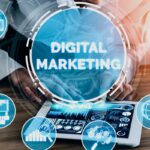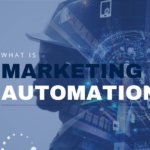Artificial intelligence (AI) has emerged as a game-changing force, revolutionizing how businesses approach advertising. From creating compelling ad copy to optimizing campaign performance in real-time, AI is reshaping every facet of the digital advertising landscape. This comprehensive guide explores the transformative role of AI in digital advertising, showcasing real-world examples and cutting-edge tools that can give your business a significant competitive edge.
With AI tools like Maino.ai, e-commerce businesses are seeing a significant boost in conversions and add-to-cart rates. This is achieved by leveraging personalized product recommendations and upselling strategies powered by AI.
Additionally, their AI assistant autonomously manage customer interactions, significantly reducing operational costs and enhancing overall service quality. These results highlight the substantial benefits that AI can bring to digital marketing and customer engagement strategies.
Understanding AI for Advertising: The Basics
To fully leverage AI in your advertising efforts, it’s essential to grasp some fundamental concepts:
What is AI?
At its core, AI refers to computer systems that can perform tasks that typically require human intelligence. This includes learning from experience, recognizing patterns, and making decisions. In advertising, AI systems can analyze vast amounts of data, make predictions, optimize campaigns, and even create content.
Let’s explore some key AI technologies that are particularly relevant to advertising:
Machine Learning and Deep Learning
Machine Learning (ML) is a subset of AI that focuses on creating systems that can learn and improve from experience without being explicitly programmed. Deep Learning is a more advanced form of ML that uses neural networks to mimic the human brain’s structure and function, allowing for more complex pattern recognition and decision-making.
In advertising, ML algorithms can analyze user behavior, predict conversion likelihood, and optimize ad placements. Deep Learning is particularly useful for tasks like image recognition in ads or natural language processing for chatbots and voice assistants.
Natural Language Processing (NLP)
NLP is the branch of AI that deals with the interaction between computers and human language. In advertising, NLP is crucial for tasks like sentiment analysis of customer feedback, generating human-like ad copy, and powering chatbots for customer service.
Computer Vision
Computer Vision is the field of AI that trains computers to interpret and understand visual information from the world. In advertising, this technology is used for tasks like analyzing the effectiveness of ad imagery, ensuring brand safety by scanning web pages for appropriate ad placement, and even creating custom visuals for ads.
Armed with these AI basics, let’s delve into specific real-world applications that can supercharge your advertising efforts.
Understanding AI’s Role in Digital Advertising
Before diving into specific applications and tools, it’s crucial to understand how AI is fundamentally changing the digital advertising ecosystem. Let’s explore some real-life examples of AI’s impact in various aspects of digital advertising:
Generating Ad Creative and Copy
Phrasee, an AI-powered copywriting tool that generates optimized subject lines and body copy, helped eBay manage its extensive email subscriber base across the US, UK, and Germany, optimizing email marketing content to drive higher engagement and performance rates.
Phrasee’s AI-driven email subject lines have been reported to increase open rates by 5-10%, which aligns with the broader trends of AI applications in email marketing.
Optimizing Ad Budgets and Predicting Performance
Albert.ai helped an e-commerce company achieve an 800% improvement in ROAS after the initial onboarding process. The company also reported continuous improvements of 10-20% in subsequent years.
This aligns with the significant ROAS improvements mentioned for the luxury fashion retailer, demonstrating the efficacy of Albert.ai in optimizing ad spend and performance.
With ad creation covered, let’s shift gears to see how AI can smartly optimize your ad budgets and predict campaign success.
Scaling Up Ad Creative and Competitive Analysis
Automated creative optimization platforms leverage AI to test various ad elements, including images, headlines, and colors, to find the best combinations for increasing CTR.
AI-driven platforms like Pattern89 use large datasets to predict ad performance and optimize creative elements. These platforms analyze billions of data points to determine which ad features are most likely to drive engagement.
Having seen the incredible power of AI in creative processes, it’s time to break down some core AI technologies that make all this possible.
Real-world Applications Relevant to Advertising
- Predictive Text: AI-powered predictive text, commonly seen in smartphone keyboards and email applications, uses natural language processing to anticipate what a user intends to type. In advertising, similar technology is used to generate ad copy, suggest keywords, and even predict consumer responses to different ad variations.
- Voice Assistants: AI-driven voice assistants like example brands Siri, Alexa, and Google Assistant are changing how consumers interact with technology and search for information. For advertisers, this shift towards voice search necessitates optimizing content for natural language queries and considering voice-activated ads as a new frontier in digital advertising.
- Chatbots: AI-powered chatbots are increasingly used in customer service and sales roles. In advertising, they can engage potential customers, answer queries about products or services, and even guide users through the purchase process, providing valuable data for retargeting and personalization efforts.
Benefits and Challenges of AI in Digital Advertising
While AI offers tremendous potential, it’s important to understand both its advantages and limitations.
Benefits:
- Personalization at scale: AI-driven advertising relies heavily on user data, raising significant privacy concerns. Ensuring compliance with regulations like GDPR and CCPA is crucial and often complex. Advertisers must implement robust data protection measures, obtain proper consent for data usage, and be transparent about how they collect and use consumer data.
- Automation of repetitive tasks: AI excels at handling time-consuming, repetitive tasks such as data analysis, bid management, and campaign optimization. This automation frees up human resources to focus on more strategic, creative aspects of advertising, improving overall efficiency and allowing teams to handle larger, more complex campaigns.
- Dynamic optimization: AI systems can monitor campaign performance in real time and make instant adjustments to improve results. This could involve tweaking ad placements, adjusting bids and budget, or modifying targeting parameters. Such dynamic optimization ensures that campaigns are always performing at their best, maximizing return on ad spend.
- Predictive analytics: By analyzing historical data and identifying patterns, AI can forecast trends and consumer behavior. This predictive capability allows advertisers to anticipate market changes, seasonality effects, and shifts in consumer preferences, enabling proactive strategy adjustments and more effective campaign planning.
- Enhanced creativity: While AI doesn’t replace human creativity, it can significantly enhance it. AI can generate novel ad concepts, create multiple variations of ad copy or visuals, and even identify unexpected audience segments or ad placements. This augmentation of human creativity can lead to more innovative and effective advertising campaigns.
Challenges:
- Data privacy concerns: AI-driven advertising relies heavily on user data, raising significant privacy concerns. Ensuring compliance with regulations like GDPR and CCPA is crucial and often complex. Advertisers must implement robust data protection measures, obtain proper consent for data usage, and be transparent about how they collect and use consumer data.
- Potential for algorithm biases: AI excels at handling time-consuming, repetitive tasks such as data analysis, bid management, and campaign optimization. This automation frees up human resources to focus on more strategic, creative aspects of advertising, improving overall efficiency and allowing teams to handle larger, more complex campaigns.
- Transparency issues: Many AI algorithms, particularly deep learning models, operate as “black boxes,” making it difficult to understand how they arrive at specific decisions. This lack of transparency can be problematic when explaining strategies to clients or when complying with regulatory requirements that demand explainable decision-making processes.
- Integration complexities: Incorporating AI into existing marketing stacks can be technically challenging and resource-intensive. It often requires significant investment in new technologies, data infrastructure, and skills training. Many organizations struggle with this integration, particularly when dealing with legacy systems or siloed data sources.
- Skill gap: The effective use of AI in advertising requires professionals who understand both marketing principles and AI technologies. This intersection of skills is relatively rare, creating a significant talent gap in the industry. Organizations must invest in training existing staff or compete to attract scarce AI-savvy marketing talent.
- Dependence on technology: As AI systems become more integral to advertising operations, there’s a risk of over-reliance on these technologies. This can potentially lead to a decrease in human intuition and creativity in advertising strategies. Moreover, technical issues or system failures could have severe impacts on advertising operations. Striking the right balance between AI-driven insights and human expertise remains a key challenge.
With a balanced perspective on benefits and challenges, let’s explore some top use cases where AI truly shines in digital advertising.
Top Use Cases for AI in Digital Advertising
Let’s explore some of the most impactful applications of AI in digital advertising:
1. Programmatic and Digital Ad Buying
AI has revolutionized programmatic advertising by enabling real-time bidding and ad placement across various digital channels. These AI-driven systems can process vast amounts of data in milliseconds, making informed decisions about which ads to show to which users, on which platforms, and at what price. This level of automation and precision significantly improves ad relevance and cost efficiency.
2. Optimize Advertising Budget and Performance
AI algorithms excel at analyzing complex datasets to optimize budget allocation across different channels, campaigns, and ad groups. These systems can predict which channels and tactics will yield the best results based on historical performance data and current market trends. By continuously adjusting spend in real-time, AI ensures that advertising budgets are used most effectively to maximize return on investment.
3. Ad Targeting and Recommendations
B2B advertisers have reached more relevant audiences and reported higher click-through rates compared to traditional demographic targeting by using LinkedIn’s AI-powered interest targeting.
AI-powered targeting goes beyond traditional demographic segmentation, incorporating behavioral data, interests, and even predictive modeling to identify the most receptive audiences for specific ads. These systems can analyze user interactions across multiple touchpoints to build comprehensive profiles, enabling advertisers to deliver highly relevant messages to the right people at the right time.
4. Create and Manage Ads
AI is increasingly being used to generate ad copy, headlines, and even visual elements. Natural Language Processing (NLP) algorithms can analyze successful ad copy to understand what resonates with different audiences and then generate new copy that’s likely to perform well. AI can also help manage ad campaigns by automatically adjusting elements like bids, budgets, and targeting based on real-time performance data.
5. Generate Ad Variations Automatically
Advertisers have reported more clicks compared to standard text ads by using Google’s Responsive Search Ads, which use machine learning to test different combinations of headlines and descriptions and automatically show the best-performing combinations. AI can create and test multiple variations of ads at scale, something that would be time-consuming and costly to do manually. These systems can generate different combinations of headlines, descriptions, images, and calls-to-action then test them in real-time to identify the best-performing variations for different audience segments.
6. Generate Images and Videos
Advertisers can create personalized video ads featuring AI-generated presenters speaking in multiple languages and significantly reduce production costs and time by using Synthesia, an AI video generation platform. This includes creating custom visuals based on text descriptions, automatically resizing and cropping images for different ad formats, and even generating synthetic video content. This capability significantly reduces the time and cost associated with creating visual ad content.
7. Personalize Ads
E-commerce clients have increased revenue per visitor through personalized product recommendations and tailored messaging. By analyzing user data and behavior patterns, AI can tailor ad messages, visuals, and offers to individual preferences. This level of personalization can extend to product recommendations, pricing, and even the timing of ad delivery, all aimed at maximizing relevance and conversion probability for each user.
8. Predict Ad Effectiveness
Before launching a campaign, AI can analyze the various elements of an ad (such as copy, imagery, placement, and target audience) and predict its likely performance. This predictive capability allows advertisers to refine their ads before spending money on ineffective campaigns. AI can also provide insights into which elements of an ad are most likely to resonate with different audience segments.
9. Run Ad Tests at Scale
AI enables advertisers to conduct large-scale A/B testing and multivariate testing of ad elements. These systems can simultaneously test numerous variables — such as headlines, images, call-to-action buttons, and targeting parameters — across large audiences. The AI then analyzes the results in real-time, identifying winning combinations and automatically optimizing campaigns for the best performance.
10. Spy on Competitors
AI-powered competitive intelligence tools can monitor and analyze competitors’ advertising strategies across various digital channels. These systems can track competitors’ ad spend, targeting strategies, ad creative, and campaign performance. By providing these insights, AI helps advertisers understand market trends, identify gaps in their strategies, and discover new opportunities for differentiation or market share growth.
To truly harness the power of AI across all aspects of digital advertising, consider leveraging a comprehensive platform like Maino.
Key Features:
- Cross-platform ad management with AI-driven optimization
- Advanced audience targeting using machine learning
- AI-generated creative content for dynamic and impactful ads
- In-depth analytics with predictive capabilities
- E-commerce integration for enhanced performance tracking
Maino stands out by offering a holistic approach to AI-powered advertising. It combines the strengths of various AI applications we’ve discussed – from creative generation to performance prediction – into a single, powerful platform. By integrating with your existing e-commerce and analytics tools, Maino provides a unified view of your advertising efforts, enabling data-driven decisions and continuous optimization.
Now, let’s zoom in on some real-world examples of big brands leveraging AI to elevate their advertising game.
Real-World Examples of AI in Digital Advertising
Let’s dive deeper into how some major brands are leveraging AI to transform their advertising efforts:
Meta (Facebook)
Meta has been at the forefront of AI adoption in advertising. Their AI Sandbox allows advertisers to:
- Test AI-generated ads: The platform can create multiple ad variations based on your input, allowing for rapid testing and optimization.
- Create multiple text and image variations: AI algorithms generate diverse creative options, expanding the possibilities for effective ads.
- Optimize ad delivery based on real-time performance data: The system continuously learns and adjusts ad delivery to maximize performance.
Meta’s AI capabilities extend beyond just ad creation and optimization. Their advanced targeting algorithms use machine learning to identify potential customers based on behaviors, interests, and lookalike modeling. This has allowed advertisers to reach highly specific audience segments with unprecedented precision.
For instance, businesses using collection ads reported a significant boost in ad performance, with some achieving a 62% increase in ROAS. The ads’ dynamic nature, showing products based on user behavior, contributed to these positive outcomes.
Coca-Cola
Coca-Cola has embraced AI in various aspects of its marketing strategy:
- AI-Powered Content Creation: Coca-Cola launched the “Create Real Magic” platform in collaboration with OpenAI and Bain & Company. This platform allows digital artists to create original artwork using iconic Coca-Cola assets, combining the capabilities of GPT-4 and DALL-E. The campaign has successfully engaged consumers and fostered creativity, featuring winning artworks on digital billboards in New York’s Times Square and London’s Piccadilly Circus.
- Vending Machine Optimization: Coca-Cola uses AI to optimize the product mix in their vending machines based on location, time of day, and local events. This has led to an example 15% increase in sales for machines using this technology.
- Personalized Marketing: The company leverages AI to analyze social media data and create personalized marketing campaigns. For example, they used AI to analyze millions of images on social media to identify popular food pairings with Coke, informing their advertising strategy.
Nike
Nike has leveraged AI in several innovative ways to enhance both their products and marketing efforts:
- AI-Powered Ad Creation: Nike created an AI-powered ad featuring tennis star Serena Williams, using historical footage to generate new, inspiring content. This approach allowed them to create a unique, emotionally resonant ad that connected with audiences in a novel way.
- Nike Fit App: The Nike Fit app, which uses AI and augmented reality to recommend the perfect shoe size, has been instrumental in reducing size-related returns; this app analyses customer foot scans and preferences to provide highly accurate sizing recommendations, thereby enhancing the shopping experience and reducing the likelihood of returns.
Feeling inspired? Here’s a rundown of top AI tools that can help you replicate such successes.
Top AI Advertising Tools
To help you navigate the complex landscape of AI in advertising, here’s an in-depth look at some of the top tools available:
1, Maino
Maino leverages cutting-edge AI technologies to provide comprehensive ad management solutions for e-commerce and B2B businesses globally.
Key Features:
- Cross-platform ad management with AI-driven optimization
- Advanced audience targeting using machine learning
- AI-generated creative content for dynamic and impactful ads
- In-depth analytics with predictive capabilities
E-commerce Analytics:
- Connect with various marketing and analytics platforms (e.g., AppsFlyer, Adjust, Shopify) to visualize all your data in one place
- AI-powered insights to identify and understand factors impacting performance
- Predictive analytics to protect revenue effects due to price parity
- Customer lifetime value predictions and segmentation
2. Persado
Persado uses AI to generate hyper-personalized marketing language across various channels, including email, web, SMS, and social media.
Key Features:
- AI-powered language generation
- Emotional language analysis
- Multi-channel optimization
- Integration with major marketing platforms
3. Albert.ai
Albert.ai is an autonomous AI marketing platform that can manage and optimize digital advertising campaigns across multiple channels.
Key Features:
- Cross-channel campaign management
- Autonomous budget allocation
- Real-time optimization
- Predictive analytics
4. Pathmatics
Pathmatics provides AI-driven competitive intelligence for digital advertising, offering insights into competitors’ strategies and ad performance.
Key Features:
- Real-time ad intelligence
- Cross-channel tracking (display, video, mobile, social)
- Creative asset library
- Spend and impression estimates
5. Phrasee
Phrasee uses AI to generate, optimize, and analyze marketing language in real-time, with a focus on email subject lines, push notifications, and social media ads.
Key Features:
- AI-powered language generation
- Brand voice preservation
- A/B testing automation
- Cross-channel optimization
6. Acquisio
Acquisio is an AI-powered platform that optimizes search, social, and display advertising campaigns.
Key Features:
- Machine learning bid and budget management
- Cross-channel performance optimization
- Automated reporting
- Anomaly detection
7. Adext AI
Adext AI is an audience management tool that uses machine learning to find the best audience for your ads across Google, Facebook, and Instagram.
Key Features:
- Automated audience testing
- Cross-platform optimization
- Real-time budget allocation
- Performance predictions
8. Emotiva
Emotiva uses AI to measure emotions and attention in real-time, helping advertisers gauge ad effectiveness and optimize content.
Key Features:
- Emotion recognition technology
- Attention tracking and analysis
- Real-time optimization recommendations
- Integration with major ad platforms
9. Omneky
Omneky leverages AI to generate personalized ad content at scale across multiple platforms.
Key Features:
- AI-driven creative generation
- Cross-platform optimization
- Performance analytics and insights
- A/B testing automation
10. Celtra
Celtra provides automated ad creative variations, enabling brands to scale their creative production efficiently.
Key Features:
- Dynamic creative optimization
- Cross-channel ad creation
- Brand governance and consistency
- Real-time performance tracking
11. OneScreen
OneScreen utilizes AI for targeted out-of-home ad delivery and performance measurement.
Key Features:
- AI-powered audience targeting for OOH
- Real-time ad placement optimization
- Performance analytics and attribution
- Integration with programmatic buying platforms
Conclusion: Embracing the AI Revolution in Digital Advertising
As we’ve explored throughout this comprehensive guide, AI is not just transforming digital advertising – it’s redefining it. From creating personalized ad experiences to optimizing campaign performance in real-time, AI offers unprecedented opportunities for businesses of all sizes to enhance their advertising efforts and achieve better results.
Key takeaways from our exploration of AI in digital advertising include:
- Personalization is King: AI enables hyper-personalized advertising at scale, allowing businesses to create relevant, engaging experiences for each user.
- Efficiency and Optimization: AI-driven tools can significantly improve the efficiency of ad spend, continuously optimizing campaigns for maximum ROI.
- Creative Enhancement: Far from replacing human creativity, AI augments it, generating novel ideas and allowing for rapid testing and iteration of ad creatives.
- Predictive Power: AI’s ability to analyze vast amounts of data and predict future trends gives advertisers a powerful edge in strategy development.
- Cross-Channel Integration: AI excels at managing and optimizing advertising efforts across multiple channels, ensuring a cohesive and effective overall strategy.
The AI revolution in digital advertising is here, and it’s transforming the way businesses connect with their audiences. From small startups to global enterprises, AI tools and strategies are leveling the playing field and opening up new possibilities for creative, efficient, and highly targeted advertising. As you move forward, consider how AI can enhance your advertising efforts, and don’t hesitate to explore the many powerful tools and platforms available.
As you consider integrating AI into your digital advertising efforts, remember that the key to success lies in choosing the right tools and partners. Platforms like Maino offer comprehensive, AI-driven solutions that can help you navigate this complex landscape and harness the full power of AI for your advertising campaigns.













